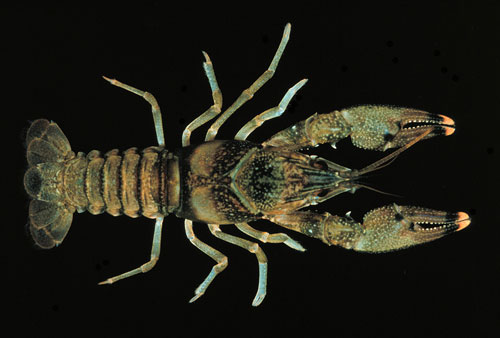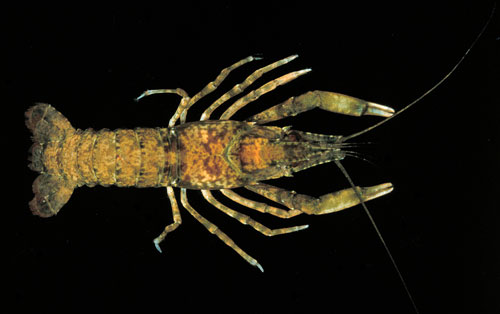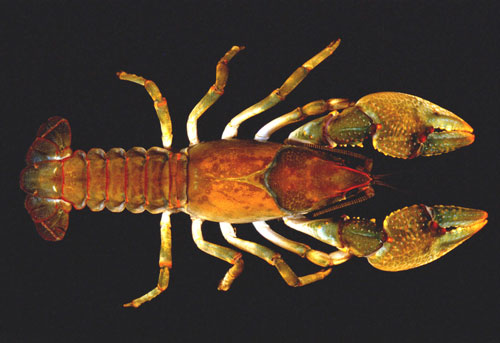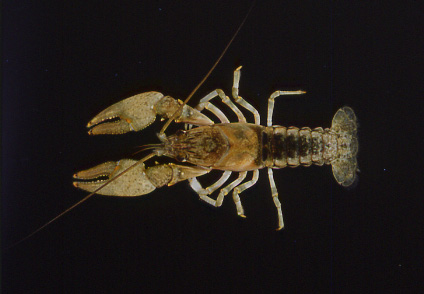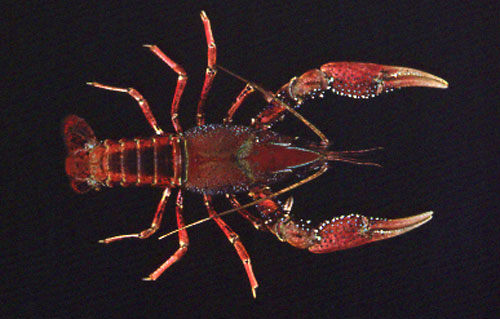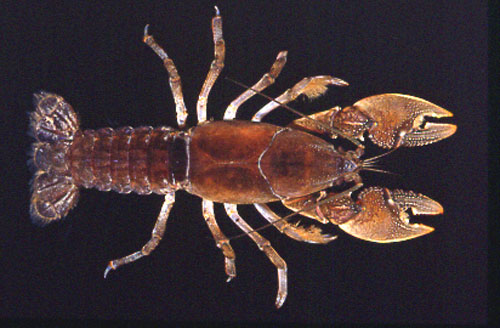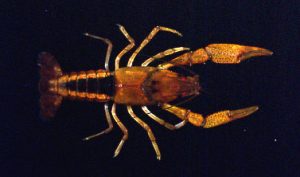 Crayfish are a widely recognized and diverse group of aquatic organisms that are a major component of aquatic ecosystems. Of the approximately 600 species found around the World, 375 occur the United States. The state of Illinois is home to 23 different species, four of which are listed as state endangered. Being a diverse group, they occur in almost all types of aquatic habitats. These range from sluggish and standing water bodies such as swamps, ditches, and sloughs, to flowing bodies of water such as creeks and rivers. They also occur in varying types of substrate, some preferring muddy silty bottoms while others prefer rocky and sandy streambeds. There are other species that spend life primarily in constructed burrows, and only come up to mate or when very wet events occur such as flooding.
Crayfish are a widely recognized and diverse group of aquatic organisms that are a major component of aquatic ecosystems. Of the approximately 600 species found around the World, 375 occur the United States. The state of Illinois is home to 23 different species, four of which are listed as state endangered. Being a diverse group, they occur in almost all types of aquatic habitats. These range from sluggish and standing water bodies such as swamps, ditches, and sloughs, to flowing bodies of water such as creeks and rivers. They also occur in varying types of substrate, some preferring muddy silty bottoms while others prefer rocky and sandy streambeds. There are other species that spend life primarily in constructed burrows, and only come up to mate or when very wet events occur such as flooding.
Mating events typically occur in the fall and spring seasons. Males have a long process used for mating that changes shape between periods of sexual activity. Form I males’ process is shaped for sexual activity while Form II males’ are not. Because mating primarily takes place during fall and spring months, more Form I males typically occur during these time periods. Females will typically store the sperm until spring when they will lay their eggs. Eggs are deposited and cemented to the underside of the female’s abdomen with a substance secreted from special glands. The eggs are carried by the female for 2-20 weeks until hatching. Upon hatching the juveniles remain attached to the mother’s abdomen through three molts of their exoskeleton before they are fully developed and large enough to forage independently. The juveniles will go through a large period of growth throughout the summer and attain sexual maturity by late summer or early fall.
Crayfish are generally considered to be omnivorous and they play a large role in the aquatic ecosystem. They have an assorted diet consisting of both aquatic and terrestrial plant matter, decaying plant matter, insects, snails, small fish, and carrion. Crayfish turn this energy into animal protein which is then made available to higher trophic level fish, mammals, and birds that prey on crayfish.
Dr. Chris Taylor and his graduate students have an active research program examining the ecology, systematics, and conservation of Illinois and Midwestern crayfishes. Dr. Chris Taylor’s research focuses on the ecology, systematics, and conservation of crayfishes and fishes. Chris has published numerous papers on the conservation of North American crayfishes and is recognized as a leading expert on the topic. He has also published a book on the crayfishes of Kentucky and is working on another for species found in Alabama. In addition to publishing on the conservation of crayfishes, Chris has described seven crayfish species new to science. Illinois is home to four species of crayfishes listed as state endangered, all of which have very restricted ranges. They normally inhabit smaller streams and when those streams intersect future IDOT project sites, protective measures must be implemented to assure their continued existence at those sites.
Some Crayfish of Illinois:
